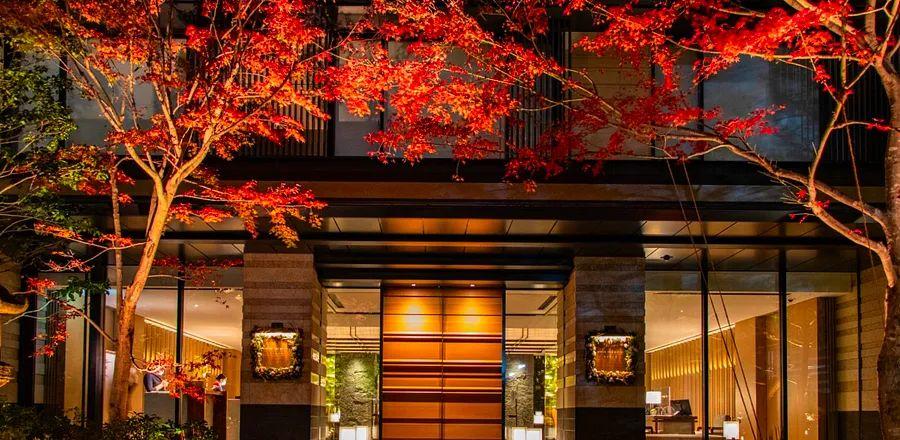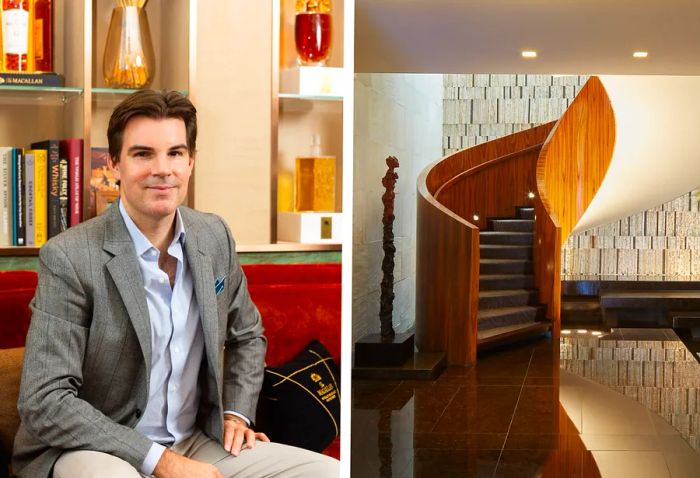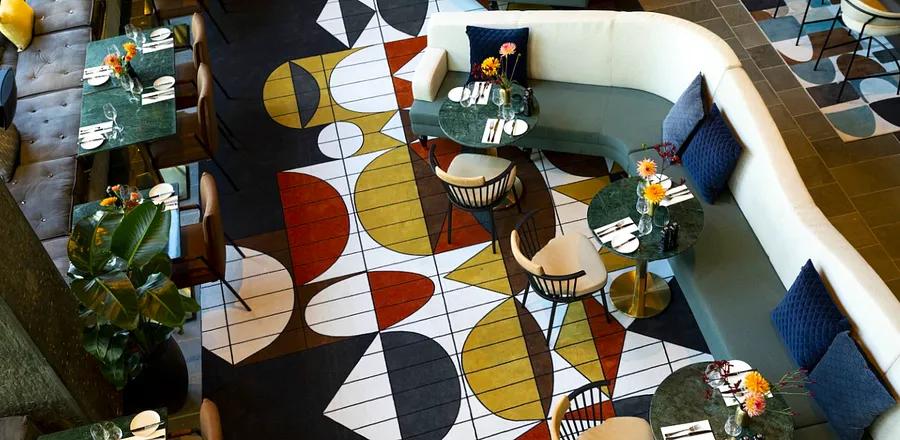These Breathtaking Luxury Hotels Are a Must for Your Marriott Bonvoy Points

Marriott International's Luxury Collection showcases an impressive variety of properties that excel in both experience and scale. Highlights include the iconic Royal Hawaiian Resort in Honolulu with its distinctive pink walls, the environmentally conscious Nines in Portland, Oregon, the exclusive eleven-villa North Island in the Seychelles, and the stunning Las Alcobas in Mexico City, designed by Yabu Pushelberg. By 2024, the collection will also feature the sprawling 3,900-room Bellagio in Las Vegas—a true destination in its own right within Sin City.
Originally established in Venice, Italy, in 1906 as Ciga Collection, the Luxury Collection boasts some of Italy’s most renowned hotels. It rebranded as the Luxury Collection in 1994, retaining several Ciga hotels, such as the Gritti Palace in Venice and Cala di Volpe in Sardinia. With the Luxury Collection currently at around 113 hotels, it's set to expand to 120 properties by the year's end, marking a significant growth from its usual pace.
Philipp Weghmann took on the role of vice president and global brand leader for the Luxury Collection in 2021. He is responsible for expanding the hotel portfolio while ensuring that each property maintains exceptional hospitality standards, continuing to differentiate itself through unique guest experiences. Weghmann, originally from Cologne, Germany, grew up visiting independent hotels with his mother, a travel advisor. Prior to joining the Luxury Collection, he spent nearly 15 years at Preferred Hospitality Group, where he helped expand its Preferred Hotels and Resorts collection to 650 independent properties.
I had the opportunity to chat with Weghmann about the future of the Luxury Collection. We explored the rising trend of luxury all-inclusive resorts, the collection’s Global Explorer program, and their exciting growth plans in Latin America, Europe, the Middle East, Asia-Pacific, and beyond.

Image courtesy of the Luxury Collection
Where are you currently located, and what’s your next travel destination?
I’m currently at home in Bethesda, Maryland, where Marriott's headquarters is located in a remarkable office building. Next week, I’ll be in New York for a brief visit, and in about two weeks, I’m heading to Isla Mujeres in Mexico, where we have a beautiful hotel nearing its grand opening. We’re conducting a final guest journey workshop to ensure every detail is flawless, including the ferry ride from the mainland. Guests will fly to Cancun and then take a boat to the island, and we want to guarantee that the experience is seamless. This will be our second all-inclusive property in the luxury Marriott collection, which is why it’s particularly significant.
Can we discuss the increasing number of luxury hotel collections, including yours, that are embracing the all-inclusive concept?
Many leading hotel chains have recognized the potential in the all-inclusive market and have started to embrace it, including us. While it’s still uncertain if this trend will succeed in the long run, there’s clearly a growing interest among travelers who may have previously hesitated to consider all-inclusives due to concerns about the quality of experience. However, the all-inclusive model is quite appealing: you make one payment and then can relax. For families traveling together, which has become a significant trend in recent years, it creates a convenient atmosphere where everyone can eat when they wish without needing to sign any bills.
The first all-inclusive luxury property in the Marriott portfolio was Sanctuary Cap Cana, an existing hotel that underwent a wonderful renovation before becoming part of the Luxury Collection about a year and a half ago. We are now excited to be opening our second all-inclusive resort on Isla Mujeres, followed by a third in the Riviera Maya in 2025. Additionally, W, Ritz-Carlton, and JW Marriott will also launch their own all-inclusive offerings.

Image courtesy of Gritti Palace, a Luxury Collection Hotel
In what ways will Luxury Collection’s Almare resort on Isla Mujeres differ from conventional all-inclusive experiences?
Most all-inclusive resorts are typically large hotels, as that’s how the model functions. They usually have over 300 rooms, like our first all-inclusive hotel, Sanctuary Cap Cana, which boasts more than 300 rooms. However, we are now introducing some much smaller options within the Luxury Collection. The Isla Mujeres resort will have fewer than 100 keys, and the upcoming one in the Riviera Maya will also be around that same number. Our goal is to deliver the all-inclusive experience with all its advantages but on a more intimate scale, ensuring that service is highly personalized for luxury guests. We aim to incorporate numerous local experiences through partnerships, encouraging guests to explore and discover the destination.
What sparked your passion for independent luxury hotels?
I have a deep love for independent luxury hotels, especially those that authentically represent their locations. My mother, who is now a high-end luxury tour operator at 75, always emphasized smaller hotels for their unique personalities and intriguing service. Privately owned establishments are even more appealing. Traveling with my parents to independent hotels instead of chain hotels significantly influenced my passion for this niche in the hospitality industry.
Interestingly, when I was around eight or nine, I stayed at a hotel in Mallorca called Castillo Hotel Son Vida, which is now part of the Luxury Collection—a full-circle moment for me. That hotel made a lasting impression; it was the finest I had ever visited, featuring stunning views of the golf courses. I remember thinking, this is incredible, and I want to stay in places like this all the time. One way to achieve that, of course, was to work in the industry.

Image courtesy of Las Alcobas, a Luxury Collection Hotel
What characterizes a Luxury Collection hotel?
It encompasses a multitude of elements. While some of our hotels boast historical significance, they can also feature contemporary architecture and design. A hotel should ideally be located in a prime area, and for the Luxury Collection, we prefer to engage a local architect and designer—or at least one of them. The hotel must resonate deeply with its destination. Moreover, adaptive reuse projects excite me the most; for instance, transforming a historic church like the Jaffa in Tel Aviv or repurposing an old jail like the Liberty in Boston is what I find truly exhilarating.
This year in Nice, we are set to unveil the Hôtel du Couvent, located in a repurposed convent. Often, other hotel brands might avoid such projects because they struggle to align with their stringent standards. It can be overly complex. However, the Luxury Collection allows for a bit of creativity and flexibility, enabling us to make these ideas a reality—assuming there’s sufficient investment involved, of course.
Our ideal guests don’t select hotels based on rigid definitions of luxury.
What type of traveler suits the Luxury Collection, and who might not fit in?
We aim to attract guests who appreciate the uniqueness of each hotel they visit. Our ideal patrons do not select hotels based on rigid definitions of luxury. While some travelers prioritize a large gym at every destination, we offer gym facilities in about 90 percent of our properties, with 75 percent featuring Technogym equipment. However, there are Luxury Collection hotels where gym facilities are quite limited. For instance, Las Alcobas in Mexico City has a modest gym due to its boutique nature. Therefore, if you seek uniformity in your hotel experiences, we may not be the ideal choice. But if you enjoy a touch of surprise with each stay and wish to discover unique, hidden gems, then our brand is perfect for you.
Could you elaborate on Global Explorer, the initiative launched by the Luxury Collection in 2011?
We nurture a community of friends and enthusiasts who resonate with the Luxury Collection's core values. An excellent example is artist Laila Gohar, who continually draws inspiration from culinary arts. She embodies the ideal blend of creativity and craftsmanship for us. Laila collaborates with small, family-owned ateliers and artisans to help preserve their crafts. She has traveled to Los Angeles, Paris, and Kyoto, where she was influenced by the local beverage cultures to design an exquisite barware collection for us, including martini glasses, elegant champagne flutes, and exquisite sake cups. Guests can enjoy cocktails crafted by her in these specially designed glasses, which are also available for purchase at our Luxury Collection Store. Additionally, during Fashion Week in Paris 2023, she created an impressive seven-foot-tall cake for us, with a smaller version offered at the bar and through room service, accompanied by champagne served in her unique glass designs.

Image courtesy of the Nines, a Luxury Collection Hotel
What made the Bellagio in Las Vegas, with its 3,900 rooms, an ideal choice for the Luxury Collection?
When we evaluated the Bellagio, we recognized it as a hotel that has established Las Vegas as a premier luxury destination since its debut in 1998. It continues to uphold this reputation, particularly in the culinary scene, as well as through its entertainment offerings, such as the Cirque du Soleil performances and the Bruno Mars-inspired Pinky Ring bar and cocktail lounge. There’s also a remarkable new bar called the Vault, where cocktails begin at $60, making it the priciest bar in Las Vegas. However, the challenge lies in the sheer number of rooms—constant renovations are essential. Recently, they invested $110 million in the complete renovation of the spa tower, which now looks stunning. They are already planning renovations for several thousand additional rooms. That’s just the way the Bellagio operates; it’s akin to several hotels in one and incomparable to anything else in our portfolio.
What do you envision as the next major travel trend?
This is my personal opinion, not the company’s, but I foresee a rise in hotels that feature Wi-Fi-free zones. Some restaurants in cities like New York already offer this concept, where guests drop their phones in a lockbox at the entrance, allowing them to genuinely engage with their dining companions. I anticipate more hotels adopting this model, with limited exceptions for Wi-Fi access in rooms or certain lounges. As humans, we require spaces that facilitate digital disconnection and detoxification—after all, that’s the essence of a remarkable trip. Currently, at some of our hotels, guests aren’t digitally detoxing; while phones can still serve as cameras for capturing memories, the focus should be on savoring the moment rather than posting it immediately.

1

2

3

4

5
Evaluation :
5/5